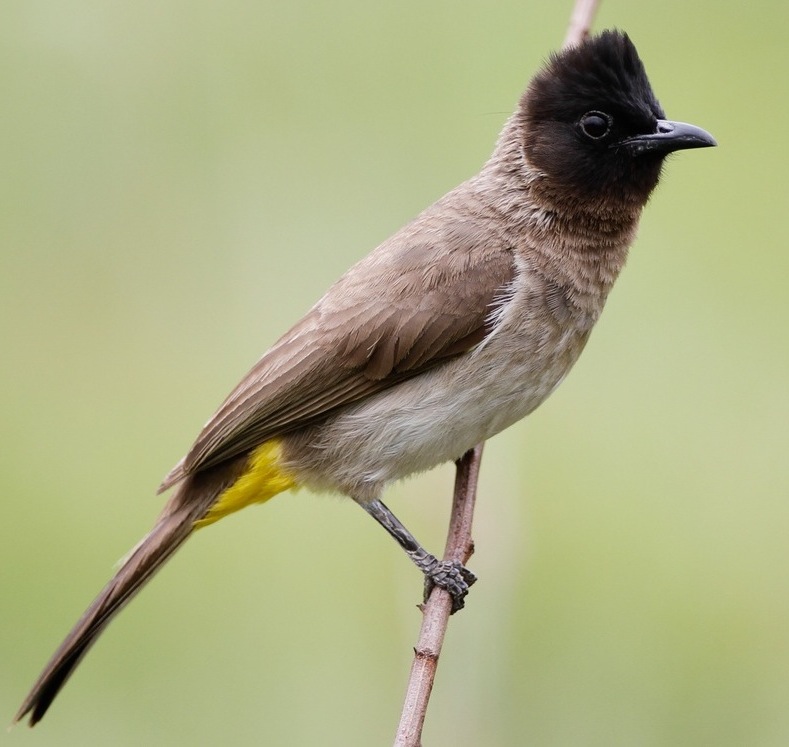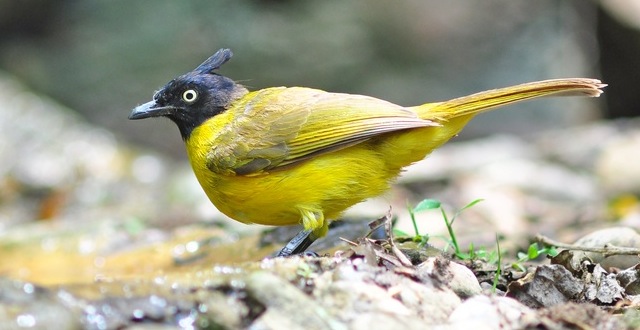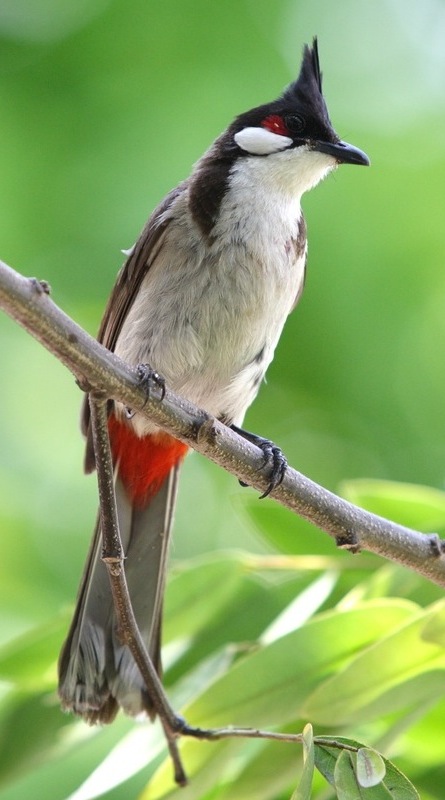Bulbuls

There are over 120 species in this family, with the Asian rather than African species of bulbul being well-represented in aviculture. What they lack in terms of bright coloration, as reflected by this dark-capped bulbul (Pycnonotus tricolor), they tend to make up for in terms of singing ability. The black-crested (P. melanicterus), as shown below, is one of the more colourful member of the group. Bulbuls are an ideal choice for a back garden aviary, being easy to accommodate and relatively hardy once acclimatised, with pairs generally nesting quite readily.
Housing

Being about the size of a budgerigar, bulbuls can be housed easily in a typical aviary, although it should incorporate a selection of plants, which will afford the birds some cover. The sides of the flight should be covered with plastic sheeting, so as to protect the occupants from the worst of the winter weather in temperate areas. The interior of the shelter needs to be well-lit, encouraging the bulbuls to roost here at night, particularly when the weather is bad.
Feeding preferences
A mixture of diced fruit, berries, softbill food or pellets will suit these birds well. Increase the quantity of livefood offered prior to and during the breeding season, as bulbuls become more insectivorous during this stage.
Breeding
 shutterstock_97547201.jpg)
Bulbuls construct a cup-shaped nest which is usually well-concealed in a suitable shrub. It can be possible to persuade them to adopt a canary nest pan with a lining as a base for their nest. Moss and small twigs are often incorporated into the nest itself. A streak-eared bulbul (P. blandfordi) is shown here.
Sociability
Quite amenable with other softbills of similar size, but can become more aggressive at breeding time, especially towards other bulbuls.
Health watch

Bulbuls are very unusual in that they are unable to make Vitamin C in their bodies, and so this needs to be present in their diet, otherwise they will suffer from scurvy. With fruit being regularly included in their diet however, this problem is unlikely to arise.
Good to start with: Red-eared bulbul (Pynonotus jocosus), as seen right, although as in other cases, visual distinction between the sexes is not possible, although the song of the cock serves as a guide.
Clutch size: 3-4 eggs.
Incubation and fledging periods: Approximately 14 days in both cases.
Enthusiast’s guide
There is no specialist work on bulbuls, but they are covered in field guides through their range, with initial reference to a checklist of birds of the world providing general information at the outset on the distribution of each species.